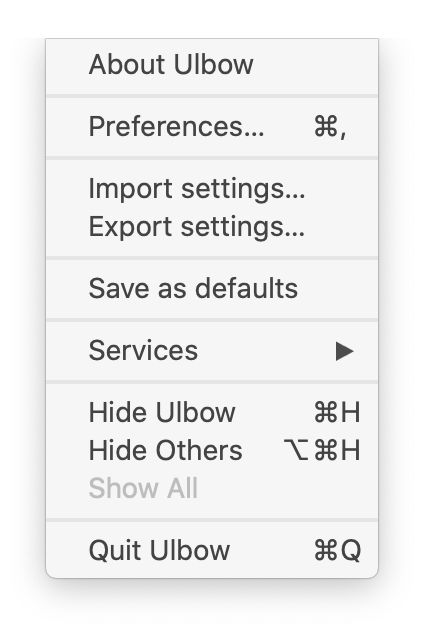Having just released my new simplified log browser Ulbow, I thought it might be helpful to show how it can tackle checking Time Machine entries in the unified log (macOS Sierra and later). My dedicated utility T2M2 is all very well and good for checking on ‘normal’ Time Machine setups that everything appears well, but it doesn’t cater for those who use custom tools such as TimeMachineEditor, nor does T2M2 give you detailed insights into errors. These are simple using the current first beta release of Ulbow.
If you haven’t already prepared Ulbow for use, now’s the time to do that. Inside its Zip archive you’ll find three important Property Lists: co.eclecticlight.Ulbow.plist is a good initial Preferences file, which you should move to ~/Library/Preferences, that’s the Preferences folder inside the Library folder in your Home folder. If you’ve already used Ulbow and want to do this now, ensure that you quit the app, and leave it a while for the preferences server to catch up, or the replacement file may get overwritten.

Then open the Ulbow app, create a new window if it doesn’t already make one for you, then select the Import Settings… command in the app menu. In the Open File dialog, locate and select either of the other two Property Lists, UlbowSettingsMojave.plist or UlbowSettingsSierra.plist. The first is best for Mojave and Catalina, the second for Sierra and High Sierra. Then click on the Open button to read those additions into Ulbow.
To ensure that the current settings are kept ready for when you next open a new window, or Ulbow itself, now use the Save as defaults command in the app menu. Do that whenever you’ve got Ulbow set up ready for a task which you will want to return to.
To run a quick check on the last two hourly backups, select the TimeMachineBasic item in Predicate, then change the period to -2 hour, leaving the present time in relative to. Leave the filter setting at none, and the style at none too, then click on the Get log button.

You’ll then see exactly the same entries which are parsed by T2M2 to perform its analysis, which give a good outline of what went on in those two backups. If your Mac only runs Time Machine backups once a day, for example at night, then you should adjust the Period settings to cover the interval during it will have made its last backup.
For two regular Time Machine backups here, in Catalina, there were just 213 log entries, with 230 lines shown in the view. That’s the sort of number which is easy to look through, checking for errors or problems, and making yourself familiar with the way that Time Machine works on your Mac.
Let’s say that you do spot an error which you want to investigate further, something you can’t do in T2M2, it’s simple to do that in Ulbow. First switch the Predicate from TimeMachineBasic to TimeMachineFull, which adds a lot of other entries from systems other than Time Machine. Adjust the Period and relative to settings to cover just the hour in which you are interested, or you could even narrow it down further using the log entries to give times. In this case, I have narrowed it down to a 23 minute period starting at 19:54. Then click on the Get log button to get the fresh extract.

Now I’ve got 1251 log entries covering just that single backup, with considerably more detail. Although this is still manageable, it’s much better to refine the listing in the window. As we’re mainly interested with errors, set the filter to error. You’ll also find the entries easier to read and understand with gentle use of colour, so change the style to basic+. If you really want a lot of detail, you can go for starters+, which shows more fields in each log entry.

This still uses the 1251 log entries found in that period, but narrows them down to 249, which should be fine for you to check through, looking for errors of significance. It turns out that every one of those 249 lines is a “non-fatal error” from com.apple.launchservices, so can safely be ignored. If you want to keep that log listing, use the Save… command in the File menu, and choose between plain text and Rich Text formats.
One additional feature of macOS which is worth exploring if your backups start becoming very irregular, and are made automatically by the macOS scheduling system DAS and CTS, is to look at its entries. In the standard settings, there’s a Predicate named DAS-CTS-TM, which looks at this on Sierra (it doesn’t work on later versions of macOS, though). Using the period in which you know a backup was scheduled by DAS and CTS, you can browse those entries in the log very simply. In a future release of Ulbow, I’ll provide an equivalent Predicate for High Sierra and later.
Once you’ve finished, close the windows and quit Ulbow in the normal way.

